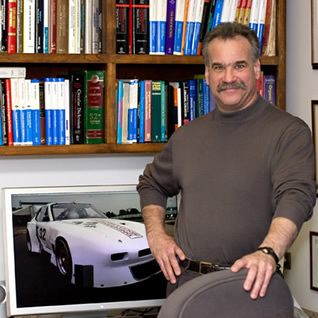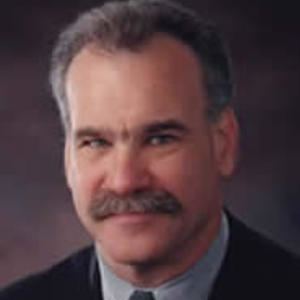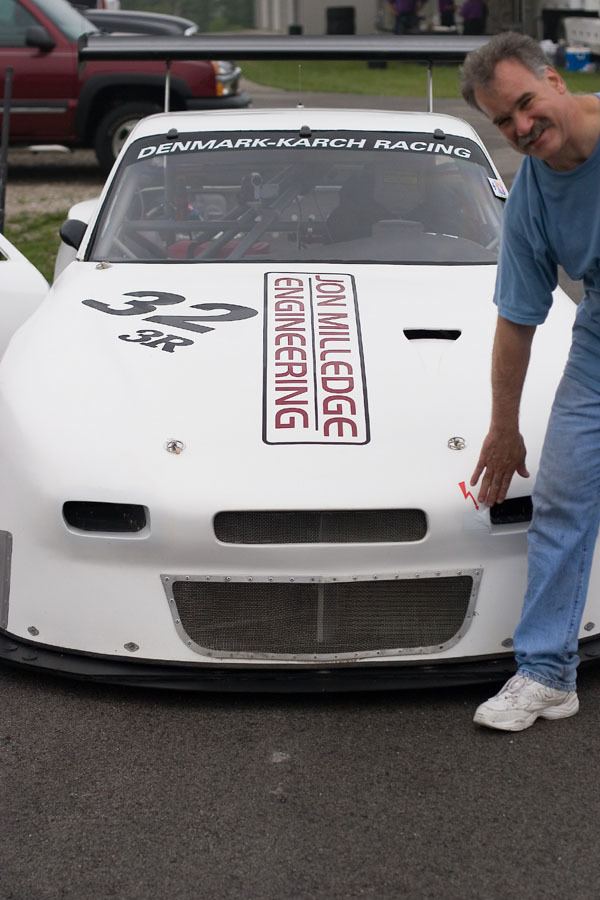Fields Chemistry Alma mater MIT | Name Scott Denmark | |
 | ||
Institutions University of Illinois at Urbana–Champaign | ||
Scott E. Denmark is the Reynold C. Fuson Professor of Chemistry at the University of Illinois at Urbana-Champaign and is Editor-in-Chief of the Organic Reactions book series. He was born in Lynbrook, New York on 17 June 1953. He obtained an S. B. degree from MIT in 1975 performing research with both Richard H. Holm (ferredoxin analogs) and Daniel S. Kemp (functionalized cyclophanes). His graduate studies were carried out at the ETH Zürich under the direction of Professor Albert Eschenmoser culminating in a D. Sc. Tech. degree in 1980 (“On the Stereochemistry of the SN’ Reaction”). That same year he began his independent career as assistant professor at the University of Illinois at Urbana-Champaign. He was promoted to associate professor in 1986, full professor in 1987 and then in 1991 was named the Reynold C. Fuson Professor of Chemistry[1]. In 2017, Denmark was elected in to the American Academy of Arts and Sciences.
Contents

Early career

Denmark self-describes to be one of the Sputnik generation. At the age of eight, he received a chemistry set from his parents and started doing experiments in his basement. During a time when anyone could buy chemicals from stores, he remember carrying bottles of nitric and sulfuric acid on the bus back from nearby town. He used his mother's vacuum cleaner to assemble a fume hood to remove halogen vapors. By high school he grew his basement to a full blown laboratory.

While in MIT as an undergraduate, Denmark intended to perform his graduate studies in Harvard University, particularly with Robert Woodward. During a private meeting, Woodward told Denmark that he wasn't always going to be around students while Denmark wanted a more available and hands-on supervisor. Woodward, then offered to "introduce [Denmark] to the 'second best' organic chemist in the world," Albert Eschenmoser at ETH Zürich. While at ETH, Denmark studied the stereochemistry of the SN' reactions. In 1980, despite having no publication during graduate studies, he was hired as an assistant professor at University of Illinois at Urbana–Champaign, where he has helped establish a world-class chemistry department.
Research

The research by Scott Denmark closely surrounds the principles of structure, mechanism, reactivity, and synthesis. He has a broad research interest, an encyclopedic knowledge in chemistry, and an intense curiosity toward science. One of his colleague says of Denmark:

"I can think of no one who has better married the goals of physical organic chemistry and synthesis..."
Denmark began his independent research with investigation of Nazarov cyclization reaction and Claisen rearrangement. He successfully elucidated the stereochemical course of the Nazarov cyclization by using a silicon group to direct the elimination step achieving high regioselectivity. The clever strategy caught the attention of English organic chemist Ian Fleming at University of Cambridge who was at the time the authoritative figure in silicon chemistry. Fleming has said "[Denmark] has been working very much to my own taste on problems that I wish I had thought of."
Denmark has had several major contributions to chemistry. His expansive interest and expertise has led to thorough investigation of several fields including nitroalkene related cycloaddition reactions, phosphorus-stabilized anions, Aldol chemistry, asymmetric allylmetal chemistry, silicon-based cross-coupling reactions, Phase-transfer catalysis, Water-gas shift reaction, and organocatalysis. Most notably, his work on the palladium-catalyzed cross-coupling reaction with vinylsilanol and arylrsilanol has been recognized as the Hiyama-Denmark coupling.
Denmark's defining establishment in organic chemistry is his research on asymmetric catalysis with main group elements, also known as Lewis base catalysis, which is a subclass of organocatalysis. He developed the paradigm of Lewis base activation of Lewis acids and successfully applied it to the asymmetric addition of a broad range of nucleophiles to sily ketene acetals, iodo- and bromo-functionalization of alkenes, and enantioselective thio- and seleno-functionalization of alkenes. His work has yielded several highly effective Lewis base catalysts that are chiral phosphoramide derivatives. Unlike other organocatalysts, the Lewis base catalysts operate without the assist of h-bonding, therefore avoiding drawbacks and have a broad substrate scope.
Another landmark achievement of Denmark's research was the observation and characterization of the pre-transmetalation species of the boron-palladium adduct in Suzuki reaction using rapid-injection NMR techniques, solving an important mechanistic problem that has been debated over several decades. His house-made rapid-injection NMR instrument is one of the few existing in the world.
As a prolific author and editor, Denmark has published over 300 peer-reviewed articles and 27 book chapters and edited several book volumes including: Topics in Stereochemistry, Organic Reactions, and Lewis Base Catalysis in Organic Synthesis. He has been an editor of Organic Synthesis since 1994 and the editor-in-chief and president since 2008. In addition, he has been on the editorial advisory board of many ACS and RSC journals including Accounts of Chemical Research, Chemical Reviews, Journal of Organic Chemistry, etc.
Current Interests
Besides continued interests in Lewis base catalysis, particularly in its application in total synthesis in natural products and drug molecules using the established methodologies, application of rapid-injection NMR techniques to probe reaction mechanisms, and the water-gas shift reaction, Denmark also has research interests in computational chemistry and chemoinformatics, organizinc chemistry, and catalysis with nanoparticles. He also has collaborative projects with several pharmaceutical companies.
Teaching and Training
Among students and co-workers (particularly those not in his group), Scott Denmark has a reputation of being tough, demanding and uncompromising, likely developed at early stage of his career. In the July 2013 issue of Synthesis, which is a special issue dedicated to Professor Scott E. Denmark, Mike Harmata of University of Missouri [2] who was one of Denmark's first four graduate students wrote:
"The intensity of youth is often associated with a certain brashness, often expressed in a confidence that can both inspire and intimidate. Such was the case for a young assistant professor at the University of Illinois-Champaign/Urbana in 1980, whose name is Scott E. Denmark."
Despite his intenseness and relentlessness, none of Denmark's first generation of graduate students, including Todd Jones [3], Eric Weber [4], Mike Dappen, and Mike Harmata, left him without Ph.D. The group employed a nom de guerre "Denmark's Disciples." Scott Denmark often admires his early students for being able to stand him and calls them "a very special group of people." Denmark admitted his intensity in his teaching philosophy:
"I have long felt that the primary functions of academic research are the creation of new science and training of new scientists in equal measure. As a neophyte assistant professor, I was single-mindedly focused on the former, but with the maturation of my first classes of graduate students I realized, quite unexpectedly, the importance and joys of the latter. Today, in my first discussions with prospective graduate students, I explain my vision of the relationship between student (apprentice) and advisor (mentor)."
He does, on the other hand, strive to have an open and interactive relationship with his students and post-docs. He makes himself available for impromptu discussions. He has weekly group meetings that focus on literature topics, subgroup meetings on research, and monthly individual meetings with each group member regarding projects and professional developments. In his words:
"Students also receive extensive input from me on developing good writing and speaking skills. I edit all required research documents and give students the responsibility of providing the first drafts of manuscripts. Often, I will collaborate with students on writing reviews on the general areas of their research topics. I also work closely with all students in their departmental seminars, in-house presentations, and also talks given at meetings elsewhere."
Unlike many prominent primary investigators in R01 institutions, Scott Denmark maintains a very low post-doc to graduate student ratio. Graduate students are more likely to receive training directly from him, as opposed to post-doc coworkers.
Personal life
An avid motorsports fan, he owns a custom-built Porsche 951 RS Turbo and four motorcycles. He has held racing license since 2003 and have been racing 4 times a year to maintain the license. He also collects fountain pens and maintains a wooden chest that contains his rich collection.
Scott loves cooking and delicious food. He has a famous fondue recipe that's published in the book What's Cooking in Chemistry, a collection of food recipes from renowned chemist.
Idiosyncrasy
As a productive editor for both journals and book publications and writings assignments from students and co-workers, Scott Denmark employs a "RGB" editing scheme using Pilot Frixion pens. Red marks are non-negotiable corrections and usually grammatical and stylistic errors. Green marks are for formatting issues, usually to comply with Journal of the American Chemical Society and Journal of Organic Chemistry format guidelines. Blue marks notify the author of logic problems which may require a rewrite and/or further elaboration.
